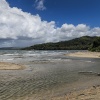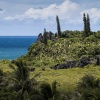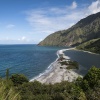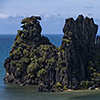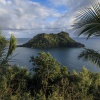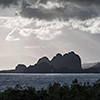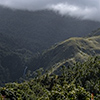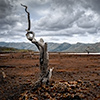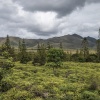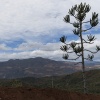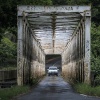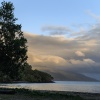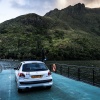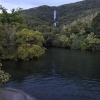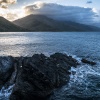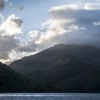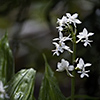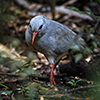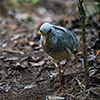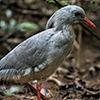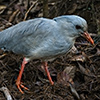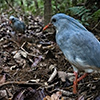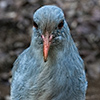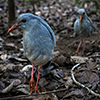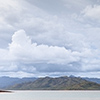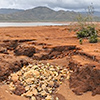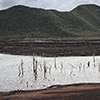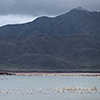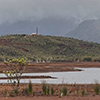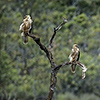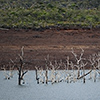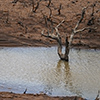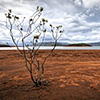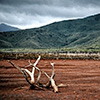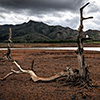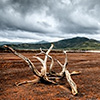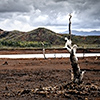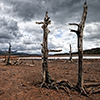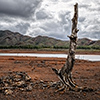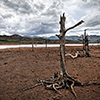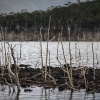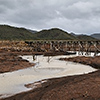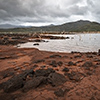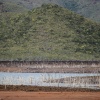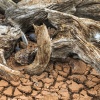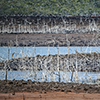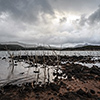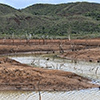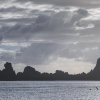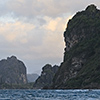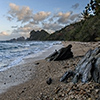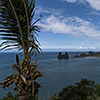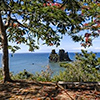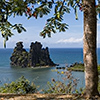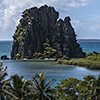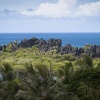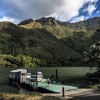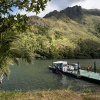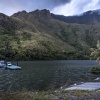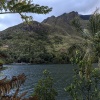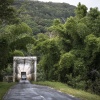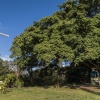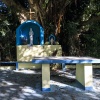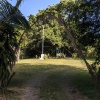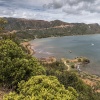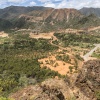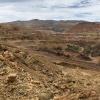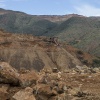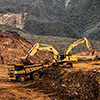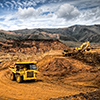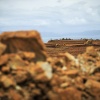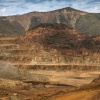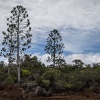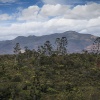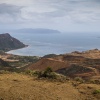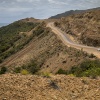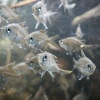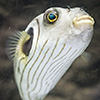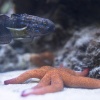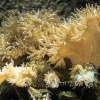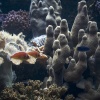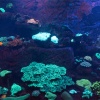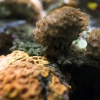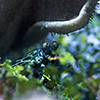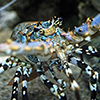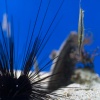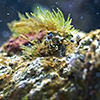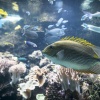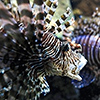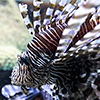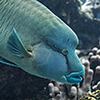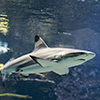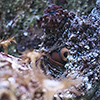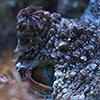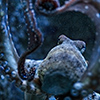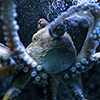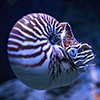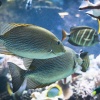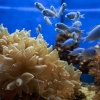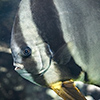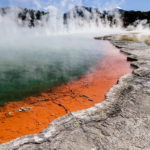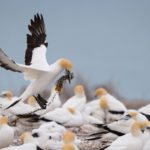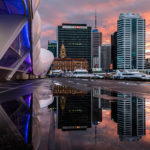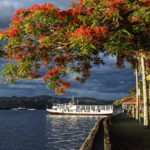New Caledonia – Kagu’s threatened Home
When something is really expensive then it costs “an arm and a leg”. Against that proverbial background the French overseas department New Caledonia is so expensive, that it costs even the double. The island can be a grave for your hard-earned money, in particular the south, where the capital Noumea slaps your face financially and with the typical arrogant French attitude you can meet in St. Tropez, Nice or Paris. Having after all a pretty much un-Pacific vibe, the island itself is a scenic gem though and worth to be explored as the coast meets high mountains, palms meet pine trees, dead forests meet dammed lakes but also the Kagu, a bird, unfortunately met the European dog, which cut down the bird population to ~700 animals. New Caledonia is a prime examples what maximally invasive western-arrogant course of actions means for fragile eco systems like the South Pacific and its people.
Jesus, I am very lucky… Shortly after Noumea the Gendarmerie flagged me down. Barely knowing French I could fortunately explain the officer that this is a rented car and there is no counterpart for my belt to buckle up. Otherwise that story would have cost me 20.000 CFP, South Pacific France, meaning 170 Euros. I may drive on and meet Stéphane who tries to hitch a ride shortly after Boulouparis.
Driving alone all the time is boring and actually the South Pacific is about helping each other, hence I stop and give Stéphane the ride he needs. And that’s how I meet a scientist, a biologist to be precise, whose job is to take care of New Caledonia’s forests. As one of the few he speaks and is willing to speak English. “Do you see the forest?” he asks me and points to the hills we’re driving through. Their slopes look bare, look naked, look like abrasions. “Normally vegetation would be so thick that you could only barely spot the soil trees and bushes usually emerge from. The hills are bleak because of the deer we brought to New Caledonia. It eats the tree bark as well as the trees’ offshoot. For a forest that means death.”
New Caledonia offers incredible sudden changes in vegetation. While in the north you can wander under tropical palms it takes only a couple of kilometres to make you having New Zealand-like pine trees around you. The variety of the forest, that is where Stéphane feels at home. He puts some decision makers in the pillory, “[…] as we have an upcoming problem with rabbits. Some people in political charge really mean that we should introduce foxes. Sure, let us make the fox sign a declaration to cease and desist not to hunt endemic wildlife and everything’s in order… In nature every species has its own place and space. The change of only one component affects an entire chain of causes and effects. What do they think are they?! The fox won’t make an exception for the Kagu.”
Kagu – that is New Caledonia’s endemic gem. It is the Kiwi of the French overseas department. A few days later I try to hunt that ground-breeding heron species photographically and chances are best at the Riviere Bleue Park. Having mounted the big 200-400mm lens, I wander rain-soaked and as silent as possible for hours through thickest rain forest as suddenly my breath halts. Searching for food, a couple of Kagus crosses my way directly in front of me. Carefully, veeeeery carefully I am changing from super tele to (funnily enough) wide angle, sit down in the mud and get the shots I wanted, the shots of a very rarely seen feathered friend.
Animals having got introduced by the white man pretty much took out a lot of flora as well as fauna. A mass murderer would have to have a 24/7 job to reach the same level of killing efficiency dog and cat already have. Not to mention the rat, as it eats the same fruits being actually meant as food for flying foxes. To boot the rat chews the seeds, flying foxes only swallow and spread them, which leaves both, the giant bats as well as plants, out in the cold. Everything in nature has its place and space – a rule that get constantly ignored by the western system when it has to satisfy its needs again individualist-egoistically.
The “Parc provincial de la Riviere Bleue” is a conservation area and accommodates the Yate Lake, a giant artificial water reservoir normally being filled up to the rim. Though the dryness of the past months made lots of water evaporate to such an extent, that now even the normally flooded land and trees are almost entirely exposed. It’s a surreal landscape, looking deep dark red, morbid and the dramatic clouds of a cyclone add the certain something to that scenery. Most of the lake’s clayish soil looks solid, but it isn’t as underneath is water. Quickly I am bogged down to the knees and I am very lucky to get out there on my own…
The weather is not really nice over here as cyclone “June” has a strangehold over southern New Caledonia making me moving to the north coast where the impressive black Linderalique Rocks already wait for me. At the latest over there New Caledonia becomes a scenic stunner: rugged rocks meet beaches, meet the ocean, meet waterfalls and pristine little rivers; and all that gets framed by the omnipresent wonderfully fiery red flamboyants, the flame trees. Simply beautiful!
Only a couple of kilometres further north, on the way to the James Cook landing site, New Caledonia becomes even more breath-taking, when the massif of Mont Panié and its 1629 metres embrace the Ouaieme River. Its foothills are the reason where there is no bridge but a ferry with an inexpressibly rattling outboard motor and a deck being painted in retina tickling turquoise. Where the great James Cook once landed and made first contact with New Caledonia, is now an open air chapel under a large tree, to remind of the Christianisation of the South Pacific.
That takes us having a look at how the white man has intervened the local culture and life. The locals are tightly connected to their land; they feel responsible for it, so never enter their land without having asked them. It is pretty much odd to see native Melanesians running around with baguette in their arms, slurping Café au Lait and following the same Noumean rush the French follow. Well, that is the only way they get accepted by the French, when the locals behave as if they always belonged to France motherland. The French pretty much switched over the Melanesians and many locals do not look happy; they have a European unfriendly expression in their face. Of course all that leaves a bad taste behind and not a few Melanesians realise what the strangers do to them, leading to a bloody revolt in 1988.
And now let’s stop beating around the bush and get down to the actual problem. My dear European neighbours, down in the Pacific you behave yourself everything but in a Pacific spirit. You act like a colonial power, like an empire and you show the very same rudeness you’re blaming other countries for, like f.e. the Brits. You answer the understandable Melanesian eagerness for independence not with constructive dialogue but with pure violence, oppression and deportation. And speaking of deportation, you even deported Algerian people daring to fight for their country, for their home, for their people to labour camps in New Caledonia. How gross it that?! The story of those people, the Algerians of the Pacific, tells the village of Nessadiou.
Except people like Stephane nature isn’t held in great esteem too. Mururoa, the atoll being used for the 1995 French nuclear tests, is the same kind of indictment like the deep wounds being brought to New Caledonia’s eastern middle by mining. Eating themselves deep into the island’s mountains, diggers basically go for nickel as over there 10% of the world’s nickel deposits are located. Driving through the dusty mining area, through an endlessly seeming landscape of colour rocks, is both at the same time, optically as well as photographically impressive but also eerie as if visiting a different planet.
Yes, I am pulling our French neighbours pretty much into pieces, I know. But I also know that there are many great French people out there understanding the situation and seconding my point of view. Simply taking uncritical photos of beaches and romanticising New Caledonia by that would be way too easy for me. Same applies to my article. The South Pacific is about a vibe, has a certain philosophy.
Today’s New Caledonia quite violates that and if the island would have been the last stop of my Pacific tour, then it would have spoiled my whole journey. Not least the hitchhiking situation, Stéphane, expressly underlines my way of looking at things as his fellow countrymen rushed past him; it was the stranger, to boot a German, who noticed and helped him.
You can escape Noumea’s un-Pacific attitude best by visiting the small but fantastic Aquarium des Lagons, which shows the biodiversity of the New Caledonian barrier reef and its lagoon. Having those impressions on my mind and a kind of a lack in my wallet I leave New Caledonia again. And even though being very touched by the fate of Melanesians living there, I don’t know if I’ll ever visit the island again.

